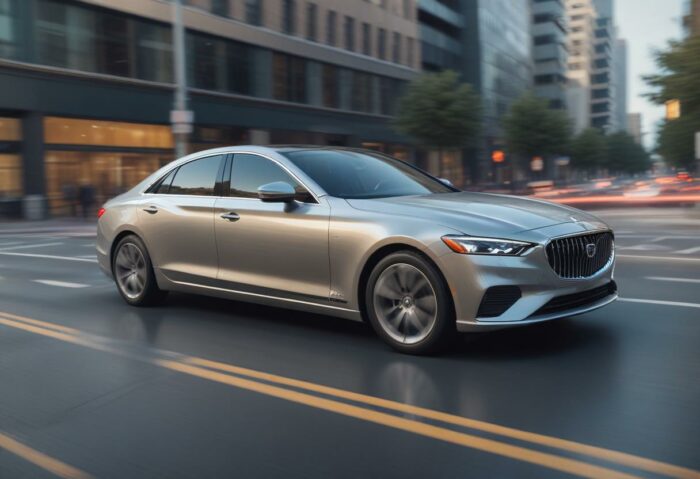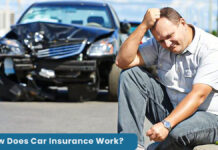Yes, when you buy a safer vehicle, it will lower your car insurance costs, which depends on the vehicle’s safety rating and features. It’s essential to always keep in mind that other factors can also impact your insurance costs, such as your driving history and coverage amount.

To determine the cost of your insurance premium, insurance companies use many factors, including the crash-test ratings and safety features of the car. In most cases, when you buy a safer vehicle, it could reduce your auto insurance costs.
Do Vehicle Safety Ratings Affect Insurance Rates?
The safety ratings provided by the National Highway Traffic Safety Administration (NHTSA) and the Insurance Institute for Highway Safety (IIHS) prove how vehicles perform in tests, like crashes. The measurement is based on the injury risk for a particular vehicle compared to vehicles in the same category.
The safety rating with the highest value will be given to vehicles with the lowest injury risk. Let’s say (the NHTSA) rated the safest vehicle with a five-star rating, and then (IIHS) gives the top safety pick and top safety pick + designations.
The safety rating is a very crucial factor to take note of when shopping for vehicles, and it is an important factor for insurance companies as well. Insurers factor in safety ratings based on their internally developed ratings when calculating insurance premiums.
Insurers may offer discounts to drivers with safer vehicles. Higher safety vehicle ratings are generally cheaper to insure due to their statistically fewer and less expensive claims.
Safety ratings don’t always result in lower insurance, but the safety features that reduce accidents, such as mirrors, fenders, and bumpers with sensors, can impact the expense of the repair when an accident occurs. And other pricing factors could skyrocket any savings from the safety rating.
Can Added Safety Features Reduce Your Rate?
Multiple features can make your vehicle safe and lower your insurance rate as well. There are many new vehicles that come standard with safety features that not only give you signs but also warn you of potential crashes. These features include:
- Automatic crash notification
- Backup camera
- Lane-keeping assistance
- Lane-centering assistance
- Adaptive cruise control
- Blind spot intervention
- Rear automatic braking
- Pedestrian automatic emergency braking
- Automatic emergency braking
- Blind spot warning
- Rear cross-traffic warning
- Lane departure warning
- Forward collision warning
Whether or not these features are what you’d like to go for entirely depends on you and your budget. It’s best to check in with an auto insurance provider to get quotes for the vehicle you’re considering.
If you discover that certain safety features are optional, make sure to still get quotes for the vehicles with and without the optional safety features. The amount saved can vary by auto insurance provider, depending on the specific features.
It’s important to compare premiums to be able to see how much you’d be able to save by choosing one vehicle over the other or by adding optional safety features.
Make sure to also consider the difference in premiums and the potential savings over the life of the vehicle. Be sure to check how long you plan to keep the vehicle, and also check whether the insurance savings will affect the cost of the safety features.
Factors Beyond Safety Rating that Can Influence Insurance Costs
The safety ratings and features of your car happen to be one of the many factors insurance companies uses to determine your premium. Here are a variety of factors that affect your insurance costs, which include:
- Deductibles: Going for lower deductibles may increase your insurance rate.
- Coverage option: The coverage amounts you choose can affect your costs. Some states require you to have a minimum amount of coverage, which can have an influence on your insurance cost.
- Age: Teens and less experienced drivers have a higher risk of accidents, which makes it more expensive to insure.
- Credit history: In a state where the insurer is allowed to use insurance-based credit scores, your poor credit can affect your insurance rate.
- Where you live: Areas with higher crime rates or more congestion tend to have higher insurance rates.
- Your driving activity: When you drive often or make use of your vehicle for commercial purposes, it can also raise your insurance costs.
- Your driving history: Accidents, other violations, and speeding tickets can increase your risk of an auto insurance rate and filing a claim.
- Vehicle size: The size and weight of your vehicle, especially larger vehicles, may have better crashworthiness compared to smaller vehicles. This could lead to lower premiums.
- Anti-theft devices: Vehicles with alarms and other tracking devices are less costly to insure, and due to their anti-theft devices, these vehicles are less likely to be stolen.
Frequently Asked Questions
How much does it cost to add safety features to a car?
Without the luxury model upgrade, it could be added as an option if you want, but at a premium cost. Convenience and driver confidence safety packages include 2–4 safety features at an average price of $1800.
Why do cars have safety features?
Cars have safety features because they protect the occupants and also safeguard pedestrians and other road users.
Safety features have become standard in most modern vehicles, including airbags, anti-lock brakes, blind-spot monitoring, lane departure warnings, and rearview cameras.
What is the most important safety feature of a car?
A seatbelt happens to be the single most important piece of safety equipment, although there are other features that help seatbelts carry out their job more effectively.



